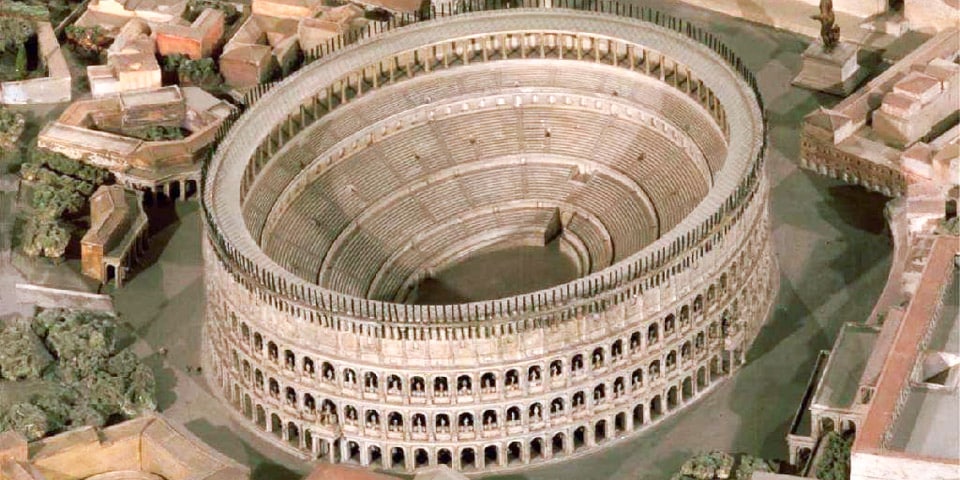

24832 views
Written by: Kate Zusmann

The Colosseum (Colosseo) is a large amphitheater whose remains still allow us to admire it in Rome nowadays. It was begun by Emperor Vespasian in 72 AD. His son Titus completed the structure in 79 AD, with the official opening in 80 AD. Moreover, the Colosseum was built by Jewish prisoners.
It’s real name is Flavian amphitheater and it was commonly called the Colosseum for both its proportions and vicinity to the Colossus of Nero
Contents
ToggleConstruction of the Colosseum begins under Emperor Vespasian on the site of Nero’s Domus Aurea, a sprawling palace complex in the heart of Rome. This choice of location is symbolic, signifying a return of the land to the Roman people after Nero’s extravagance.
Work progresses on the foundation and substructures, likely the most challenging parts of the construction due to the marshy ground. The Romans used a mixture of concrete and rubble for the foundation.
Construction of the outer walls progresses. These are made from travertine stone blocks, brought to Rome from quarries via the roads and the Tiber River. The stones are held together by iron clamps, with no mortar used.
Work begins on the inner walls and vaults, using a mixture of concrete and tufa, a lighter type of stone. This includes the hypogeum, a series of underground passages and rooms used to house gladiators and animals before the games.
Construction of the seating areas and the intricate network of access tunnels and staircases that would allow the massive structure to fill and empty quickly begins. The seats are designed in a tiered arrangement, with the best seats (the lowest level) reserved for the most important people.
The final touches are added, including decorative elements such as statues in the arches of the upper three tiers and possibly the first awning (or velarium). However, under Emperor Titus, the Colosseum is not officially inaugurated until 80 AD, with a lavish set of games that lasts for 100 days.
It’s important to note that the exact timeline is speculative, as precise historical records do not exist for this period. The timeline also does not account for possible pauses or slow-downs in construction due to resource shortages, budget constraints, or political instability.
Author: Kate Zusmann
This website uses cookies. For more info read the cookies policy
Rome.us © 2025. Created with love by Roman experts and guides.